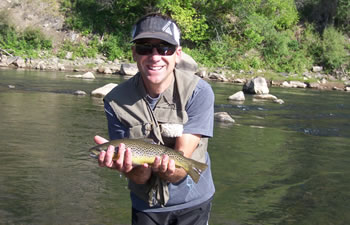Hiring Tips - Picking the Best Candidates
by Guy Harris
I often hear leaders from all types of organizations ask questions about hiring the right person. Their questions usually sound like these:
- What if their resume looks great but they have a bad attitude?
- What if they put on a good act and then don’t work hard?
- How can I tell how they will perform after I hire them?
A great way to answer these questions starts with a well-defined interview process. I have heard the procedure called many things. I first learned it as the Behavioral Event interview process. The guiding thought behind this system is that "while it is no guarantee of success, past performance is the best indicator of future performance."
Here is the main idea -- develop an interview system that forces the candidate to tell you, in direct and specific terms, how they have worked in the past. You want the candidate to do more than recount where they have worked and what experience they have. You can read their resume to get that information. You want the candidate to tell you: how they think, how they work, and how they relate to other people.
Actual implementation can get a little involved, but the basic process goes like this:
- 1) Identify the key skills (attributes, attitudes, etc) for success in your organization. In a big company, you might develop the list by interviewing successful people in the organization. In a smaller company, you could brainstorm with the owner(s) about what they want to see in an employee.
- Rank the competencies to separate the “must-have” traits from the “would be nice” traits. Write your list in the form of a checklist for use during interviews.
-
Develop a series of questions that get people to tell you specifics about their experience. The best series start with broad, open-ended questions and lead to follow-up with questions that dig for specifics.
For example, the series could go like this:
Start with an open-ended question like “Tell me about a time in your high school (college, internship, last job, etc.) when you had to convince another student (co-worker, etc.) to help you?" or "Tell me about a time from your last job (internship, college, etc.) that you had to make a sudden change in plans?" Let them pick the scenario; you probe for specifics.
When they give you the scenario, begin the process of "peeling the onion." Ask follow-up questions like “When that happened, what was the first thing you did?” Then, "Who did you talk to to make the change happen?" Maybe you could follow that with,"Did they react positively or negatively to your request, and how did you respond to them?"
The idea is to get the candidate talking about how they handled a specific situation (their feelings, actions, and responses). By addressing a specific situation rather than a hypothetical scenario, you get a good feel for how they might handle a similar situation in the future. - As the candidate responds, look for evidence of the core competencies you identified in step 1. Use your checklist to keep track of your observations
- Train several people to conduct this type of interview. Always have more than one person involved in the process. I suggest having several people interview the candidate. Each interviewer should ask about a different part of the person's life and work experience (school, work, volunteer work, etc).
- After the interview process, get each interviewer together to compare notes and observations. If the candidate demonstrates the key skills you are seeking across several areas of their life, they are likely to bring those skills into your business. Now you have a good basis for deciding whether this person fits you and your organization.
I have been through this type of interview on both sides of the table. I find that it works very well and creates a win-win scenario for both parties. For the qualified candidate, the process feels good because there are no “trick” questions. For the interviewer, it gives you concrete information that you can use to make an informed decision about the candidate’s fit in your organization. Only the unqualified candidate loses. For them, the process is uncomfortable. They must give specifics; there is little room for “shading the truth” to get the job.
About The Author
Guy Harris is the Chief Relationship Officer with Principle Driven Consulting. He helps entrepreneurs, business managers, and other organizational leaders build trust, reduce conflict, and improve team performance. Learn more athttp://www.principledriven.com Register for Guy's monthly “Positive Principles” newsletter at http://www.principledriven.com/newsletter.htm
For weekly advice and tips on talent acquisition subjects subscribe to our LI newsletter TA Tips.




